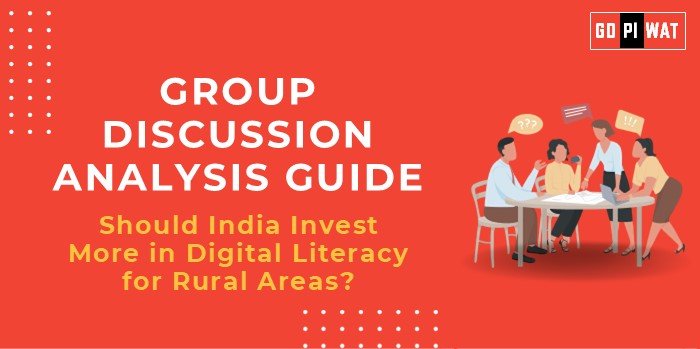🌐 Should India Invest More in Digital Literacy for Rural Areas?
🌍 Introduction to the Topic
With the rapid expansion of Digital India and over 900 million internet users, bridging the digital divide has become a critical challenge. Despite significant investments in digital infrastructure, only 20% of rural households have consistent internet access. Strengthening digital literacy in rural areas is essential for equitable access to digital services, economic opportunities, and information.
📊 Quick Facts and Key Statistics
- 📱 Internet Users: 900 million+ (March 2024), highlighting a robust digital ecosystem.
- 🌾 Rural Internet Access: Only 20% of rural households are online, exposing a significant digital divide.
- 👨💻 PMGDISHA Beneficiaries: 6.7 crore rural citizens have received basic digital literacy training.
- 💳 UPI Usage: 11.5 billion monthly transactions show widespread digital adoption but primarily in urban areas.
- 📡 BharatNet Reach: 1.8 lakh gram panchayats connected, building the backbone for rural digital services.
🤝 Stakeholders and Their Roles
- 🏛️ Government Agencies: Facilitate infrastructure projects and literacy initiatives like BharatNet and PMGDISHA.
- 🏢 Private Sector: Collaborate on expanding digital infrastructure and providing literacy programs.
- 🏫 Educational Institutions: Incorporate digital skills into curriculums to foster long-term literacy.
- 👥 Rural Communities: Play an active role in adopting digital tools and advocating for local digital education programs.
📈 Achievements and Challenges
✅ Achievements
- 💡 Digital Financial Inclusion: UPI’s success has facilitated economic participation even in semi-rural areas.
- 📡 Infrastructure Rollout: BharatNet’s expansion has connected over 1.8 lakh gram panchayats.
- 📘 Training Programs: PMGDISHA has provided basic digital skills to over 6.7 crore rural citizens.
⚠️ Challenges
- 📉 Infrastructure Gaps: Connectivity remains inconsistent in remote rural areas, limiting digital service adoption.
- 🖥️ Digital Literacy Deficit: Many rural citizens lack the skills to use digital tools effectively.
- 👩🦰 Gender Divide: A 33% gap in mobile internet usage between genders hinders inclusive progress.
🌎 Global Comparisons
- 🇨🇳 China: Heavy investment in rural digital infrastructure has led to rapid adoption of digital services.
- 🇪🇪 Estonia: Universal digital literacy and access to e-governance serve as a model for inclusive digital ecosystems.
🔮 Structured Arguments
- ✅ Supporting Stance: “Investing in digital literacy will empower rural populations, enabling them to access information, services, and economic opportunities.”
- ❌ Opposing Stance: “Without reliable infrastructure, digital literacy programs may have limited impact in rural areas.”
- ⚖️ Balanced Perspective: “While both infrastructure and literacy are essential, a hybrid approach that prioritizes infrastructure with simultaneous literacy programs can yield sustainable outcomes.”
📄 Conclusion
Investing in digital literacy for rural India is critical to bridging the digital divide and ensuring inclusive progress. While infrastructure development remains a priority, concurrent efforts in digital literacy can empower rural communities, enhance economic opportunities, and promote equitable access to digital services. A collaborative approach involving government, private sector, and educational institutions is key to achieving this goal.
📄 Source: Group Discussion Analysis Guide, 2024


